Today, like most days, Singapore Airlines will fly its 120+ strong fleet of passenger aircraft on over 250 flights across the world, connecting over 70 destinations, with services lasting as little as 1 hour right up to 19 hours, but 47 years ago in 1976 it was a different story altogether.
Back then only 21 aircraft plied a network of 28 cities – but it was still an impressive operation for an airline in relative infancy, having split from Malaysia-Singapore Airlines (MSA) just a few years earlier.
Airline Timetable Images kindly hosts a scanned copy of the Singapore Airlines passenger and freighter timetable from summer 1976, which came into effect almost exactly 47 years ago, making this a good time to reflect on an interesting chapter in the carrier’s great history.
The fleet in 1976
Four years after splitting from MSA, the Singapore Airlines we all now know and love was still in its relative infancy, during the May – October 1976 summer season.
At the time the airline operated an all-Boeing fleet totalling just 21 aircraft.
That comprised 11 Boeing 707s, five Boeing 737s and five Boeing 747s.
Singapore Airlines Fleet (1976) |
||
| Aircraft Type | In Fleet | Routes |
| Boeing 707-320B | 3 | Australia / NZ, North Asia, SE Asia, India, Middle East, Europe |
| Boeing 707-320C | 8 | |
| Boeing 737-100 | 5 | Regional (Bangkok, Brunei, Jakarta, Kuala Lumpur, Medan) |
| Boeing 747-200 | 5 | Australia, North Asia, SE Asia, India, Middle East, Europe |
| Total | 21 | |
The timetable in 1976
Printed airline timetables were common across the world right up until the early 2000s, but soon stopped being produced by most airlines as the internet and mobile apps replaced any necessity for these.
Some airlines like Delta, JAL and ANA still produce PDF timetables for you to download from their websites, but most, including SIA, no longer bother.
The particular timetable we’re studying here is the slimline edition for the summer 1976 season from 1st May 1976 to 31st October 1976.

Back then, the network spanned 28 destinations across 23 countries, with cities from London through to Auckland on the roster, however US services (with passenger aircraft at least) were still three years away.
Back then these resembled railway timetables more than the airline schedules you see today, with each route or series of routes shown in a directional sense with the flights in columns and the stops / times in rows. A completely separate table showed the timings on the same routes in the opposite direction.
This was a fairly logical way to display the schedules in 1976, when the same aircraft typically made several stops on its journey from origin to ultimate destination – much less common today with the vast majority of Singapore Airlines flights flying simple point-to-point services.
If you wanted to fly from Singapore to London for example, the easiest way to check your options with SIA was to find the flights that ended up there (from the last row of the timetable above, you can see there were seven each week).
They all departed from Singapore at 8.30pm each evening but with different flight numbers and usually a slightly different routing each day.
Fun fact: Your best bet for getting some sleep on a Singapore – London flight in 1976 was probably to take one of the Tuesday, Wednesday, Thursday, Friday or Sunday flights that went via Bangkok then took a long 6.5-hour overnight non-stop leg to Bahrain (yes, 6.5 hours was long in those days!). Monday and Saturday departures meant taking in an extra stop in India.In May 1976, Auckland had just become SIA’s newest destination, with twice weekly Boeing 707 services operating via Sydney.

SIA had a separate timetable for its multiple short hops to and from Kuala Lumpur and Brunei, covering 122 flights per week on these routes.
Interesting to note that SIA was already flying 52 flights per week to Kuala Lumpur, not far off the 55 the airline flies per week today.
Fun fact: 45-50 minutes was the scheduled flight time (gate-to-gate) between Singapore and Kuala Lumpur in 1976. Today, most flights on this city pair are scheduled at 1 hour to 1 hour 10 minutes. Planes haven’t become slower – longer taxi times and more complex airborne routings due to higher traffic volumes are to blame.In-flight meals
The timetables also showed what kind of in-flight meal would be served sector-by-sector.
As you can see in this example of a Singapore to London flight, a light meal was served between Singapore and Bangkok, followed by ‘substantial refreshments’ (whatever those are!) from Bangkok to Bahrain.
The following morning it was breakfast between Bahrain and Rome, then refreshments from Rome to Frankfurt (except for new joiners in Rome, who were treated to breakfast), followed by yet more refreshments between Frankfurt and London.
A total of five meals on the nearly 22-hour journey, assuming you wanted them all!
Only the longest non-stop flights on the network (Singapore to and from Sydney and Melbourne) offered two meal services on the same flight, depending on the time of day.
Paya Lebar
Work had started on preparing Changi Airbase as the site for Singapore’s new international airport in June 1975, almost a year before this timetable was in effect, however it would be a further five years before SIA’s operations actually moved across to the new airport.
That means all the flights you see in this timetable operated to and from what is now Paya Lebar Airbase (opened in 1954 as Singapore International Airport and operated under that title until 1981, when Changi commenced operations).


Today Paya Lebar is almost exclusively used as a military base, but also acts as an alternate airport for Changi (accepting flight diversions if necessary) and is home to an ST Engineering aircraft maintenance facility, so it does see occasional civil aircraft operations.
Similarly, think ‘Kai Tak’ when you see Hong Kong mentioned in these timetables, ‘Don Mueang’ for Bangkok, ‘Orly’ for Paris and ‘Itami’ for Osaka.
Boeing 707 network
The Boeing 707 fleet was the airline’s workhorse in 1976, with 10 passenger variants in service plus one dedicated freighter.
Don’t be confused by the Boeing 707-320B / -320C designations in the fleet table above, the ‘C’ model could simply be converted between passenger and freight operation while the ‘B’ was a passenger-only aircraft. SIA only used one of it’s ‘C’ models as a freighter in 1976.
The 707 passenger aircraft alone flew 189 flights per week (close to an average of three flights per aircraft per day). With a range of up to 5,000 miles, Sydney was well within reach and was the longest non-stop flight from Singapore, while Singapore to Kuala Lumpur was the shortest hop.
Despite mostly operating in the Asia-Pacific region, the passenger Boeing 707s also made two weekly trips to Europe. Starting in Perth at lunchtime every Tuesday and Saturday they would fly to Singapore then onward to Amsterdam via Colombo, Dubai and Zurich.
It was then an identical routing in reverse landing back in Perth in the early hours of Friday morning and Tuesday morning respectively, the whole round-trip taking 2.5 days in total.
Most of SIA’s Boeing 707s were second hand from US carriers Continental (now United) and Braniff (now defunct). Two aircraft had come from Qantas and the three Boeing 707-320Bs were delivered new to Malaysia-Singapore Airlines in the late 60’s. They remained in the fleet until the early 1980s.
Boeing 707 cargo network
Unlike Singapore Airlines today, which has a fleet of seven dedicated Boeing 747-400 freighter aircraft as its ‘pure’ cargo workhorse, back in 1976 the airline had just one Boeing 707 freighter in its fleet.
The aircraft had a regular weekly flying schedule, setting off from Singapore just after midnight every Monday morning, destined for Amsterdam via Dubai.
After landing back in Singapore the following afternoon via the reverse routing, the aircraft had a day off before departing again in the early hours of Thursday morning for Los Angeles via Hong Kong, Guam and Honolulu.

The reverse of that routing saw the aircraft back in Paya Lebar just before 2am on Saturday before one last sortie to Paris via Bahrain just a few hours later, returning via Zurich and Bahrain at 5pm on Sunday evening ready to set off on the same schedule again just 7 hours later.

As you can see from the timetable, Singapore Airlines also had a joint cargo flight with KLM during May 1976, however this was operated by one of the Dutch carrier’s DC-8s, a type never used by SIA.
Boeing 737 network
Although part of the same family, the Boeing 737-100 is not to be confused with the very capable 737s of today, like SIA’s Boeing 737-8 MAX which can fly with a full payload for upwards of 7 hours (3,500 miles).
The 737-100 had a range of only 1,500 miles, around 3 hours, meaning even Hong Kong was out of reach from Paya Lebar (SIA used 747-200s in 1976 to fly non-stop flights to and from Kai Tak).
That meant SIA’s Boeing 737-100s only flew to regional cities like Jakarta, KL, Medan and Brunei in 1976, with the longest route being to and from Bangkok.
The aircraft was configures with 12 First Class seats in a 2-2 configuration, and 73 Economy Class seats in a mostly 3-3 configuration.

As you can see from the boarding card above, Economy Class passengers boarded from the rear steps, with First Class passengers boarding exclusively via the front steps (the First Class rows 1-3 aren’t even depicted on the Economy Class boarding card!).
Only 30 Boeing 737-100s were ever built, with SIA operating five of them including the last one ever delivered. Most airlines then opted for the larger and longer-range 737-200, though SIA never ordered those.

The Boeing 737 rejoined the Singapore Airlines fleet with the merger of SilkAir into the mainline carrier in 2021, and the airline is now taking delivery of factory-fresh Boeing 737-8 MAX aircraft with brand new cabin products, for an eventual fleet of 37 such jets.
All of SIA’s Boeing 737-100s were originally delivered new to Malaysia-Singapore Airlines in 1969, before transferring to Singapore Airlines. They remained in the fleet until 1980.
Fun fact: Tradewinds Charters, a wholly owned division of Singapore Airlines, was set up in 1976 – the same year this timetable was published. It sub-leased SIA aircraft to begin with, not becoming an airline in its own right until 1989, but later went on to become SilkAir, which was recently absorbed into SIA itself.Boeing 747 network
The five Boeing 747-200s in the SIA fleet were its main key to Europe, higher density North Asia routes, and the ‘Kangaroo Route’ linking the UK with Australia.
As you can see even getting to Tokyo wasn’t a simple affair in 1976, with at least two stops involved whether you took the Boeing 707 or the Boeing 747-200. Most of us would scoff these days at a single transit on a Singapore – Japan flight, even if it saved us some money!
With the Boeing 707 only flying to a couple of the smaller European cities, it was the Boeing 747-200 that was dedicated to serving most of the SIA network there, including several intra-Europe routes, though aside from London none of these cities saw daily service like they do today.

In 1976, Singapore Airlines redesigned its first class upper-deck lounge on the Boeing 747-200s, adding six so-called ‘slumberettes’ – sofas that converted into flat beds.

The five Boeing 747-200s in service in 1976 had all been delivered new to Singapore Airlines, joining the fleet from 1973. More aircraft arrived later and the type remained in service with the airline until 1994 as a passenger aircraft, and until 1995 as a freighter.
Later the airline also used the Boeing 747-300 and Boeing 747-400 as passenger aircraft, and as mentioned above seven of the -400s are still in service as dedicated freighters.
The ‘Kangaroo Route’
The ‘Kangaroo Route’ between Australia and the United Kingdom started in the mid 1930s, with aircraft flying between Brisbane and London.
Qantas, who launched the service in cooperation with Imperial Airways, later trademarked the term, though it became widely used as a marketing slogan by many carriers.
As the maps and timetables above show, Singapore Airlines already had a strong presence on the Kangaroo Route in 1976 using its Boeing 747-200s. Here’s an example of SQ713, operating from Melbourne to London:
Monday
- 11:15 Melbourne – Sydney 13:30
- 14:30 Sydney – Singapore 18:50
- 20:30 Singapore – Bombay 23:25
Tuesday
- 00:25 Bombay – Bahrain 01:10
- 02:25 Bahrain – Athens 06:25
- 07:25 Athens – Paris 09:35
- 10:35 Paris – London 10:40
This routing was flown by the same aircraft using the same flight number throughout the seven-leg journey.
Of course not everyone was flying all the way through from start to finish, with passengers joining and leaving the plane at various intermediate points, subject to SIA’s traffic rights. Total travel time if you started in Melbourne and flew all the way through to London was 32 hours and 25 minutes, with seven flights to endure.
Today, SIA passengers can fly from Melbourne to London in as little as 23 hours 15 minutes, with a single 2-hour transit in Singapore, though the same aircraft does not operate all the way through, and two different flight numbers are used.
There were a variety of routings and stopover points on these flights between Europe and Australia, with some flights also extending to New Zealand.
For example each Monday, Friday and Saturday afternoon at 3.30pm a Singapore Airlines Boeing 747-200 would depart from London bound for Australia, however it never took the exact same routing.
- Monday: London – Amsterdam – Rome – Bahrain – Bangkok – Singapore – Sydney
- Friday: London – Paris – Athens – Bahrain – Bombay – Singapore – Sydney – Melbourne
- Saturday: London – Frankfurt – Rome – Bahrain – Bangkok – Singapore – Sydney – Melbourne
“Fifth freedom” routes
In the 1970s “fifth freedom” traffic rights were commonplace, with aircraft having far less range than they do today, necessitating several stops on longer routes.
This made it essential for airlines to be able to pick up and drop off revenue passengers at intermediate points, in order for the services to be commercially viable.
During the summer of 1976 it was therefore possible to buy tickets on a range of Singapore Airlines flights without touching Singapore itself, including:
- Hong Kong – Osaka
- Hong Kong – Taipei
- Taipei – Tokyo
- Sydney – Auckland
- Jakarta – Sydney
- London – Amsterdam
- London – Frankfurt
- plus others
Singapore Airlines did not have traffic rights between:
- Colombo and Amsterdam
- Colombo and Madras
- Bombay and Bahrain
- Bombay and Paris
- Melbourne and Sydney
- Rome and Amsterdam
Additionally only the airline’s own stopover passengers were allowed to join flights between:
- Athens and Paris
- Bahrain and Paris
- London and Paris
Seems like the French in particular weren’t keen on sharing their air market with foreign airlines at the time!
For example you could depart from Singapore to Athens on a Monday evening, landing on Tuesday morning, then spend a four-night stopover there before continuing on the next SIA flight passing through Athens to Paris on Saturday morning.
New passengers flying solely from Athens to Paris however would not be able to buy a ticket for this part of the journey in isolation.
Destinations no longer served
Despite a big increase in SIA’s network over the last 40 years, the airline was flying to a few cities in 1976 which it no longer serves.

Singapore Airlines no longer flies to Bahrain or Athens, the latter ending in October 2012 but since picked up by budget subsidiary Scoot in June 2017.
Flight numbers still used today
Singapore Airlines has significantly changed its flight numbering system since 1976, however there are a few flight numbers that were in use then and, by luck or by design, still are today.
In some cases, they even correspond to the same route, or a similar routing.
| Flight No. | Then (1976) | Now (2023) |
| SQ107 / 111 / 113 / 117 / 121 / 125 | Kuala Lumpur to Singapore | Kuala Lumpur to Singapore |
| SQ108 / 112 / 114 / 118 / 122 / 126 | Singapore to Kuala Lumpur | Singapore to Kuala Lumpur |
| SQ203 | Jakarta to Singapore | Singapore to Cairns |
| SQ204 | Singapore to Jakarta | Cairns to Singapore |
| SQ207 | Jakarta to Singapore | Singapore to Melbourne |
| SQ208 | Singapore to Jakarta | Melbourne to Singapore |
| SQ306 | Singapore to Sydney | Singapore to London |
| SQ308 | Singapore to Perth | Singapore to London |
| SQ611 | Bangkok to Singapore | Seoul to Singapore |
| SQ612 | Singapore to Bangkok | Singapore to Seoul |
| SQ631 | Osaka to Singapore via Hong Kong and Bangkok | Tokyo Haneda to Singapore |
| SQ637 | Tokyo to Singapore via Taipei and Hong Kong | Tokyo Narita to Singapore |
| SQ638 | Singapore to Tokyo via Hong Kong and Taipei | Singapore to Tokyo Narita |
| SQ712 | London to Sydney via Amsterdam, Rome, Bahrain, Bangkok and Singapore | Singapore to Bangkok |
| SQ713 | Melbourne to London via Singapore, Bombay, Bahrain, Athens and Paris | Bangkok to Singapore |
| SQ725 | Perth to Amsterdam via Singapore, Colombo, Dubai and Zurich | Phuket to Singapore |
| SQ762 | London to Melbourne via Frankfurt, Rome, Bahrain, Bangkok, Singapore and Sydney | Singapore to Yangon |
After 1976
With the airline still in relative infancy in 1976, there were many significant changes after that.
Boeing 727s joined the following year, and between 1977 and 1980 a Concorde featured the Singapore Airlines livery down one side for flights to and from London. While the aircraft itself was operated by British Airways, the cabin crew were a mix between the two carriers.
We have a comprehensive history of SIA’s Concorde operation, so be sure to check it out.
In 1978 the DC-10s started to arrive, opening up the airline’s first US service to San Francisco (the well-known, but not reinstated since COVID, SQ1/2) the following year, then in the 1980s the airline also operated A300s, A310s, 757-200s and 747-300s.
Summary
It was fascinating to look back at a much smaller (but certainly no less simple) Singapore Airlines operation in 1976.
The complexities of having a fleet of just 21 aircraft with so many of them so far from home at any one time on some circuitous routings to say the least must have been vast, especially in the days before mobile phones, the internet and satellite tracking seen in modern airline operations centres.
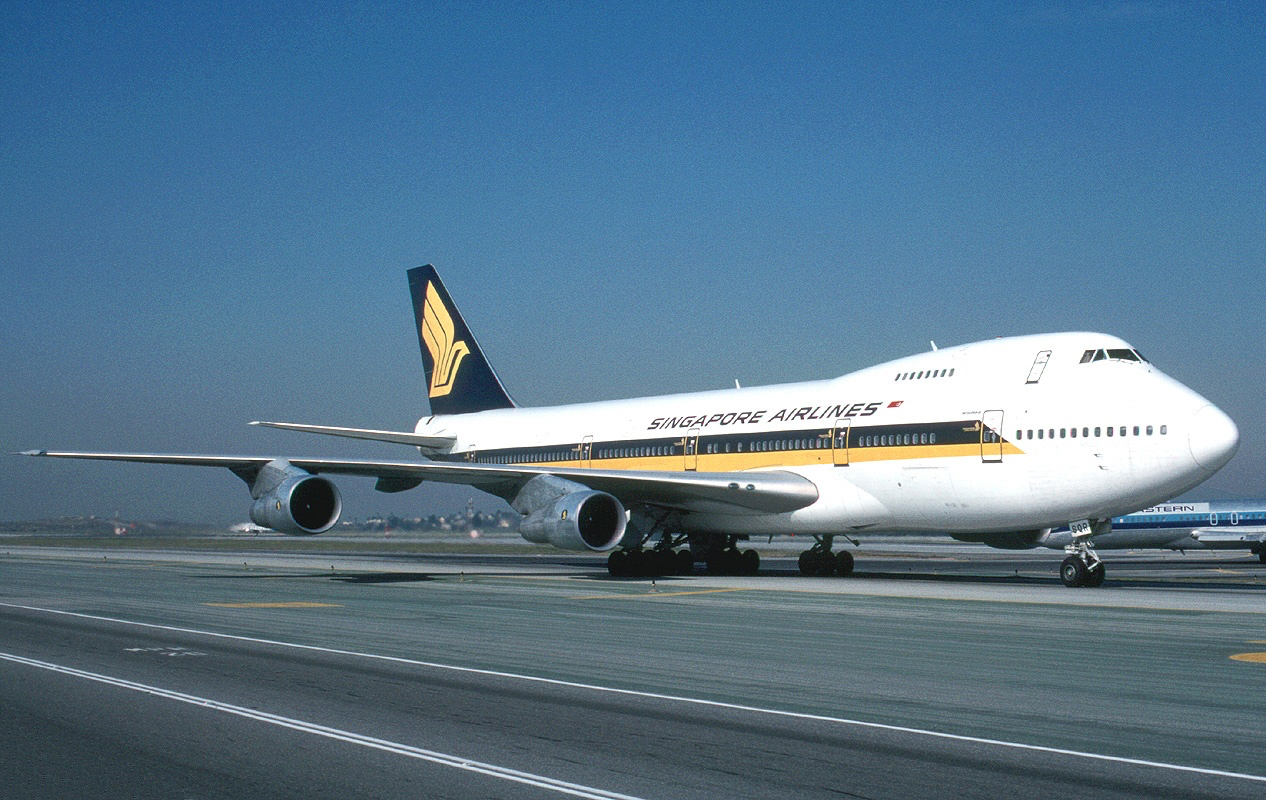
We believe the last printed Singapore Airlines timetable was produced for the winter 2008/09 season, around 15 years ago, after which schedule information was only available online, as it is today.
If you have any of the old Singapore Airlines printed timetables from other years, please get in touch as we’d love to see them, and would happily replicate this analysis from a different era like the 1980s or 1990s.
(Cover Photo: Frank C. Duarte Jr.)
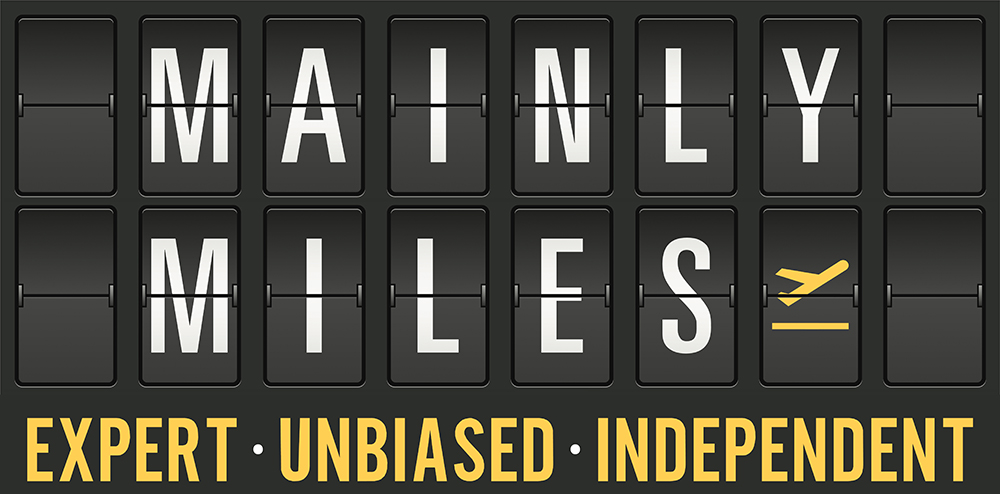

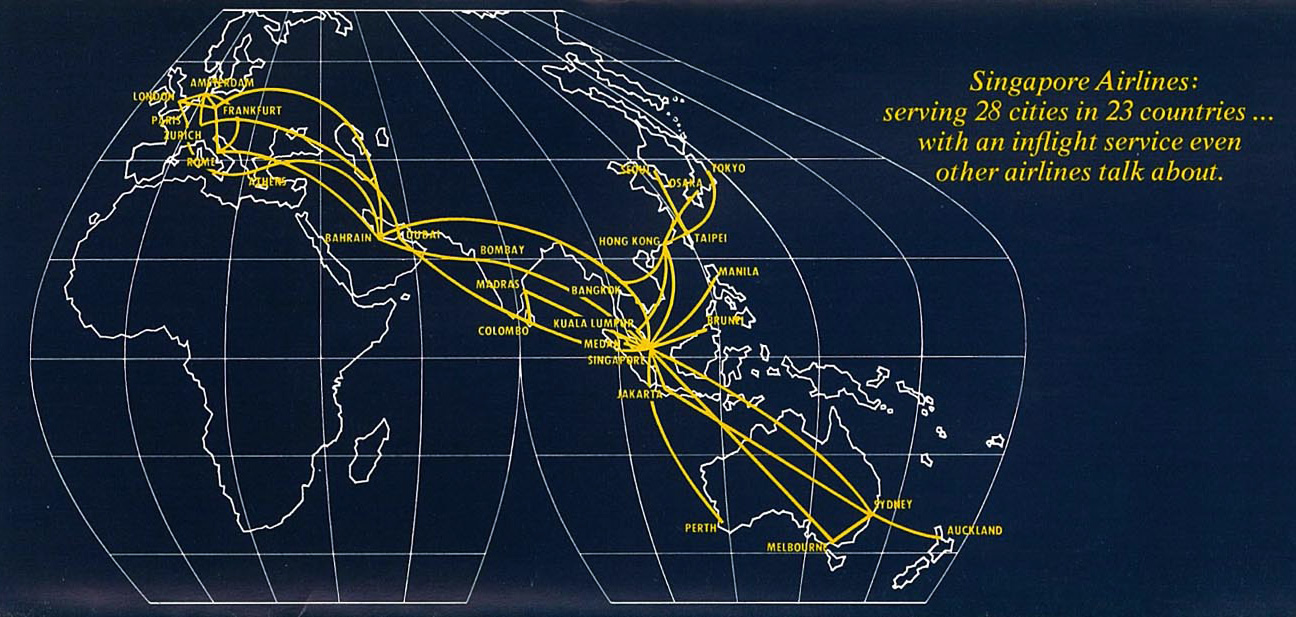


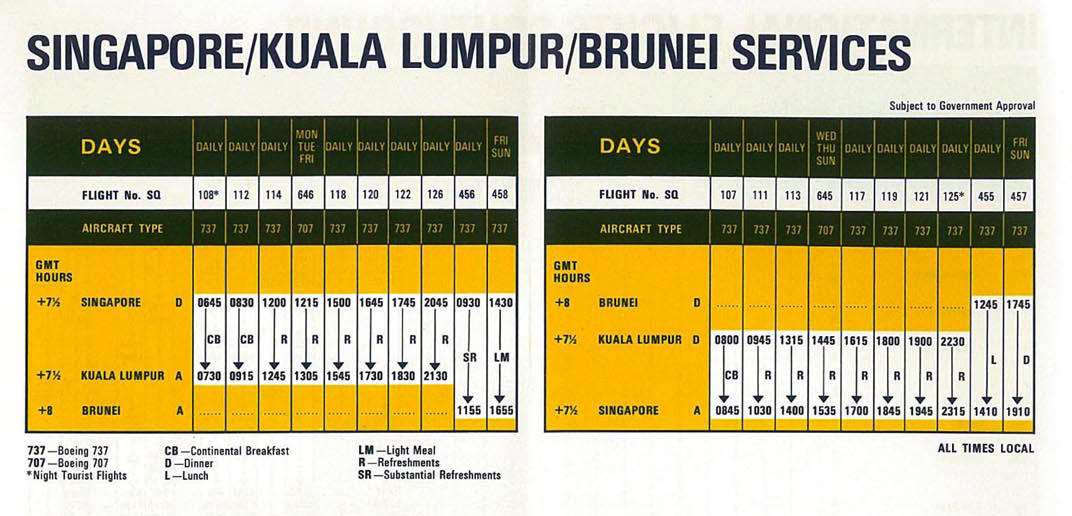
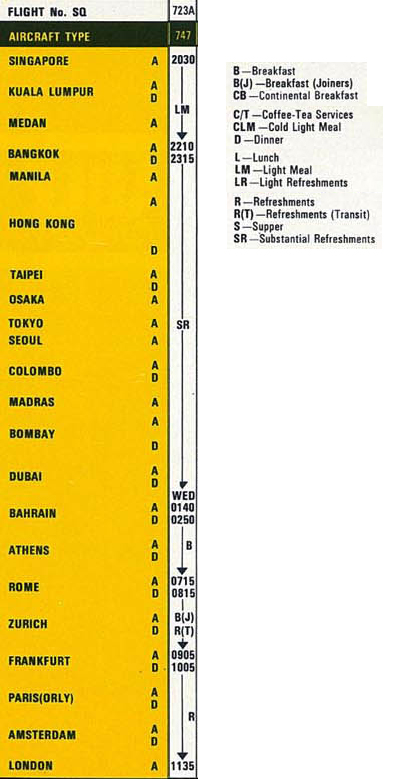


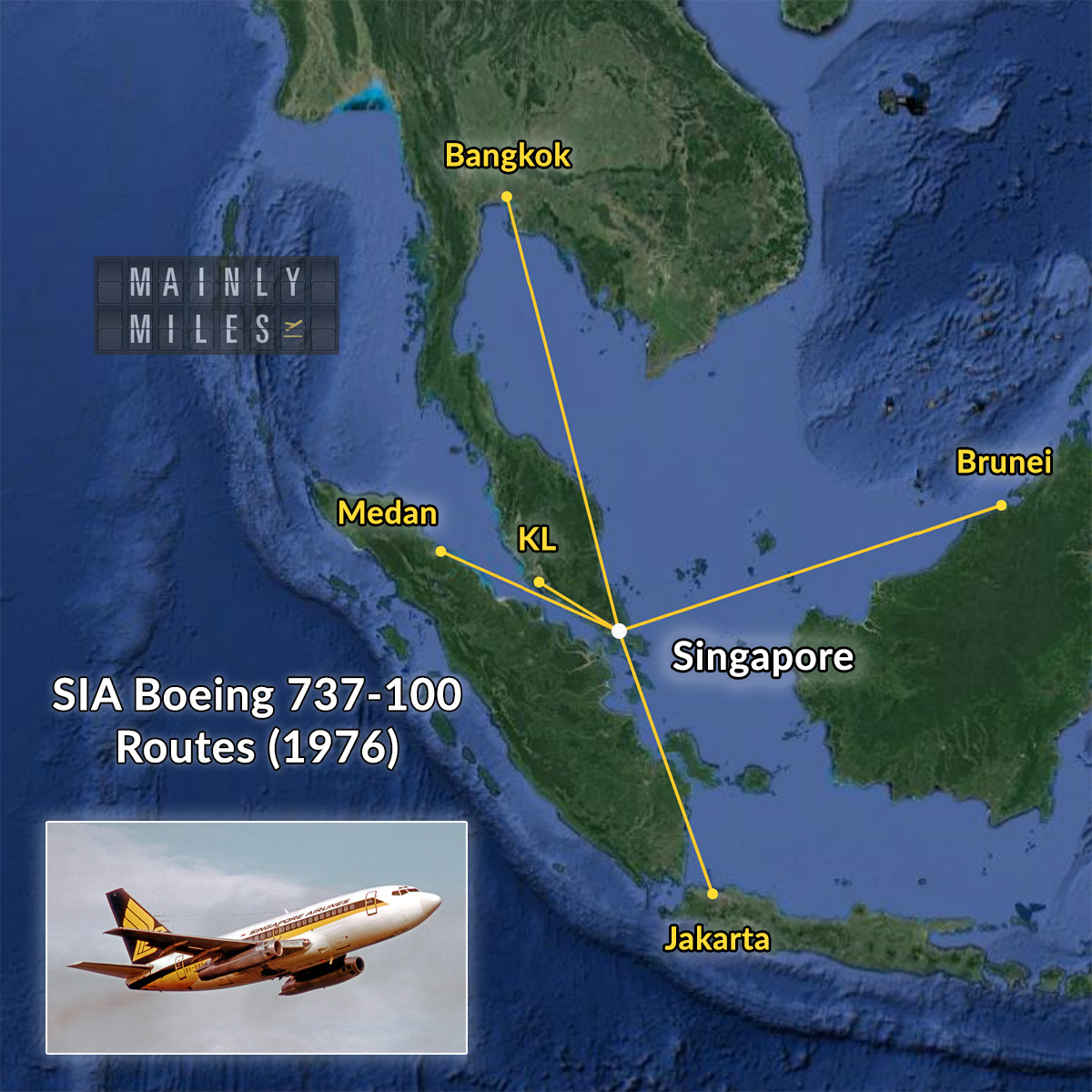
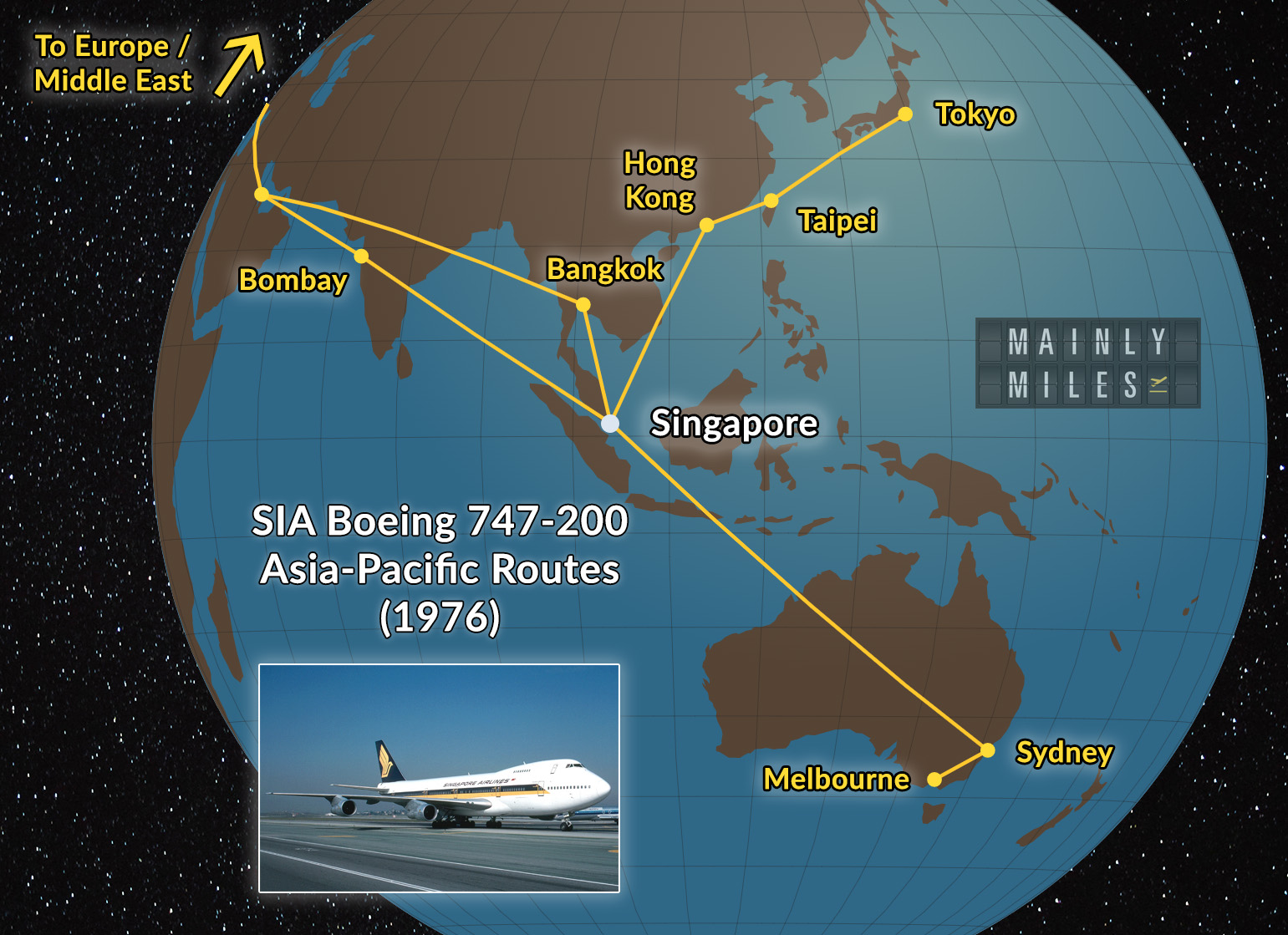



Great job Andrew! Very informative read and analysis!
Just to point out some factual correction: CGK and KNO didn’t exists in the 1976. Jakarta international flight then was served via HLP Halim Perdana Kusuma airport (while domestic one was served via JKT Kemayoran airport). Medan was served via MES Medan Polonia.
It is also interesting to note the disappearance of Bahrain as a transit hub with its role replaced by Dubai, Doha and Abu Dhabi with strong national airlines.
Thanks David! Will update that. Also discovered while researching this article that Paya Lebar (QPG) was SIN until 1981, with the same IATA code transferred to Changi.
Significant reasons being longer range aircraft that did not necessitate stopping over in Bahrain, and the hollowing out of Gulf Air as its partner states gradually pulled out to start their own airlines?
#throwbacktoawholenewlevel 😄 #arewethereyet
Lovely analysis! What a flash of nostalgia.
Great article. Just to point out that KNO didnt exist until the new airport opened in 2013.
SQ 612/611 is still used today. 🙂
Then: SIN-BKK-SIN
Now: SIN-ICN-SIN
Interesting and fascinating throwback, thanks! Always loved looking at schedules and route maps, and I try to collect hard copy schedules when I see them around today (usually in Japan/Korea where airlines still print these – I think I recall seeing a Singapore Airlines one when I was in Nagoya late last year).
What an interesting and original piece. Really enjoyed reading this.
Btw 107 and possibly 108 are still utilized on KUL routes
not from this era as such but what was SQ229/SQ230 adelaide to singapore return was reallocated for a while onto perth services,that number is from the 90’s when adelaide and melbourne on the sq227/sq228 were delinked.we got the a310’s when the victorians got the a340’s/later 777’s in 1996/1997.
those milk runs to london were unusual.i wondered how many people used them when there was qantas via bahrain or british airways that went via bombay or muscat during the 70’s and 80’s which was the preferred option.in fact it was not till SIA AND THE BIG TOP 747-300 of 1983 they went to nonstops.the qf and ba one stoppers lasted till about the 744 era in 1989/1990.
As far as I can recall there was normal Boeing 737–100 when Singapore airlines was incorporated. All the earlier Boeing 737–100 were traded away by 1972 to be replaced by the B737-200. I was an SIA pilot who flew all SIA’s B737-200 from 1973 to 1974 and flew the B707 in 1975 to 1977 when I then flew SIA’s B747-200 and later the B747-300 and B747-400. If I can recall, the legendary icon captain Winkie Ho WT was appointed Chief Pilot on the B737 in late 1972 and he only flew the B737-200 as prior to his promotion. He was with the Fokker F27 of Malaysia-Singapore Airlines (MSA) the predecessor of SIA. Captain Ho retired from the B737-200 and never flew the SIA B707, B747 or any later planes. Captain Ho affectionately addressed me as “Big Brother” in Cantonese in line with the close ties of the personal B737 cabin and cockpit crew address then for the unusual large groups of then Malaysians from MSA opted to be with SIA.
Boeing 737-200 1971 1980
https://en.wikipedia.org/wiki/Malaysia–Singapore_Airlines
Great article – do you know when SIA increased to a daily LHR service from 3 times a week?
I agreed with the author that the fifth freedom traffic right at that time was particular interesting & that pssengers can fully made use of it without having to transit to SIN. I remembered my cousin who studied abroad to the UK. He managed to take SQ flight from HK to BKK & then joined another flight fom BKK to LON. I don’t think it is possible to do that now.
Really enjoyed reading this! Would love a similar analysis on the 1990s or 2000s!